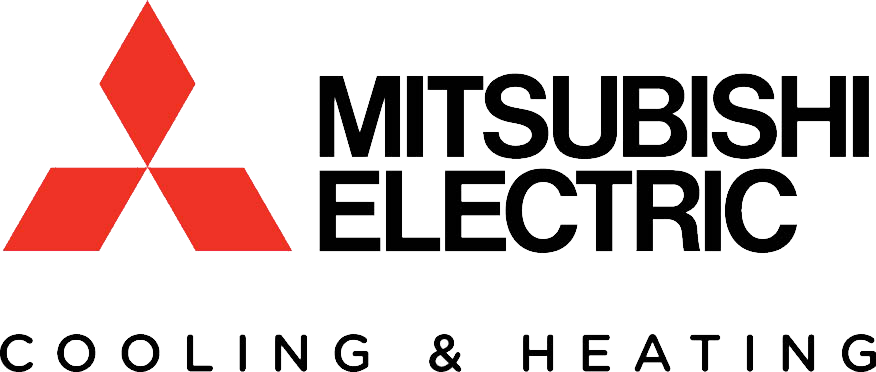You can come train with me on ventilation techniques and installations- check it out here.
Home ventilation is a very wide ranging topic, and it’s important to understand which parts of it can apply to the home you’re improving or building from scratch. On this channel, we’re always exploring the science of homes by using testing techniques and tools, to help you predict and prevent side effects in the invisible physics, chemistry and microbiology of homes- and crafting the ventilation system is a central ingredient in this.
We’ve explained before why opening a window, or having an old-fashioned drafty house do not count as ventilation by our standards- we’re only going to focus on the most consistent and reliable ways to bring outdoor air inside, and to make that inside air as healthy as possible.
Right now, I’ll take you on a tour of a bunch of ways you can control the dynamics of any home using ventilation devices. All of these are made by just one company, Aprilaire- and the fact that they make such a variety of systems is significant, so let’s look at the reason for a second.
Don’t let anyone tell you there is a silver bullet. No product, or solution, will work in every home, or even always work for different families in the same home, and the people at Aprilaire have built their systems around that fact. Looking just at where a home is located will demonstrate this- here’s their guide on which of these systems might work best across the U.S.- you can see we’re already starting to customize the ventilation approach, and location is just step one. Lots of other factors should go into crafting the right ventilation system for a home.
I’ve set this up so we can tour these components through the lens of the fundamental 4 elements of home performance that we’re always trying to control, in their order of importance:
Air quality (meaning particle, chemical, and microbiological contaminants)
Moisture
Airflow and Pressure
Heat flow
First, contaminants. Aside from bringing in outdoor air to dilute indoor pollution, which we’ll show in a few minutes, the best way to clean any home’s air is with filters. Any device that’s more than a filter and a fan is almost certainly adding to a home’s chemistry by causing unpredictable toxic chemical reactions.
If you want to be sure you’re not experimenting with chemistry and messing with a home’s microbiome, then avoid ‘killing’, ‘sanitizing’, ‘destroying’, or any other action-movie words, and stick with capture and release, which is how a filter cleans.
Here’s a filter cabinet that’s designed to be installed upstream from your HVAC system’s blower, and as you can see it’s wide, tall, and the filter zigzags- it’s called a ‘pleated’ filter. It’s important to ask whether your blower can handle a better filter, that restricts the air flow more- of course, the answer is that any fan can deal with any super high quality filter, AS LONG AS IT HAS ENOUGH SURFACE AREA. Upgrading a standard one-inch thick flat filter to one of these four-inch thick pleated ones gives you about 9 times as much surface area, which makes a much better filter so much less restrictive on airflow.
If you’re aiming for a healthier home, you need a MERV 11 filter, minimum. This grabs 65% of dust particles down to a thousandth of a millimeter, but it won’t grab anything smaller than that. Here I have a MERV 13 and a MERV 16, which is almost as good as HEPA, which is used in hospitals.
By the way, filters only capture particles, which are little blobs and droplets suspended in the air- to capture chemicals that are mostly what we can smell, we also need a layer of activated carbon (charcoal).
Before we move on, I just want to say that I sometimes hear people complaining about the cost to replace filters when they get full of gunk, which seems crazy to me- if the filter is dirty, it’s doing a great job, and you should be grateful that dirt isn’t in your lungs instead. Money well spent. Also, a big high quality filter like this only gets replaced every 6-12 months, instead of 1-3 months like a cheap one.
OK, next element of Home Performance we can tackle is Moisture. There are only two basic things that can happen here- we have too much moisture, or not enough. Let’s start with not enough moisture- when the humidity indoors goes below 30%, we can start to overdry the building materials and the people- you might get chapped skin and nosebleeds, in addition to cracks in the floor and walls.
Simple answer, add more moisture to the air. But like always, how exactly you do that is much more complex and important. Hanging wet towels up might help a tiny bit, and just boiling water on the stove isn’t the way to go, since that’s technically ‘cooking’, and you’d also be introducing pollution from tiny particles into your breathing space. What works better is a whole-home humidifier- there are two main types.
The less-sophisticated approach that you may have seen before is called an evaporative humidifier- it basically pulls air through a soaking wet mesh panel, and relies on simple evaporation. This one is the model 400, which doesn’t create any waste water that goes down the drain. Water will probably get more expensive down the road. Yes, this system does improve humidity, but it’s not nearly as effective or precise as the second tool: a modulating steam humidifier.
Whereas the wet plate version has to be soaking wet to work, which makes it a one-speed tool (completely on or off), this 800 series modulating system can tune its output to exactly what’s needed. Also, it’s injecting actual steam into the duct system, which gets absorbed into the air faster. One thing to note here, though, is that your ductwork needs a safe distance downstream for the steam to blend with the dry air- if there are branches or turning vanes in the duct before the mixing’s done, they’ll get wet, and then you’re likely starting a new civilization of tiny creatures that you probably don’t want to smell. In the manual, you can see exactly how far downstream is far enough, based on the speed your ducted air is going.
Now, the other problem we have with moisture in homes is too much- this can lead to those tiny creatures, mildew, mold, rot, respiratory health problems, and so on. Most people who study building science agree that with today’s more air tight housing and smaller air conditioning systems, we need to be preparing for higher humidity with whole-home dehumidifiers.
I have dehumidifiers installed here in our forever home, and in our high performance tiny house on wheels, and they are so important. This E100V is designed to be installed in line with your ductwork, like the rest of these, so it’s a step up from a portable unit in that respect, but it’s also more powerful- this one can pull up to 100 pints per day under extremely hot and humid conditions (80 degrees F and 60% relative humidity). Of course, once it’s been running for a few hours, it should be wringing less and less moisture out of the air, since hopefully we have the windows closed and the home is getting more under control.
This machine has another module I added to it, which is this ‘ventilation plenum’. This option allows you to start making indoor air healthier by diluting it with outside air. So the damper on top can draw from inside or outside, or a mix of both- and since the supply ventilation air is being immediately dehumidified, we don’t have the gross problem of summer air creating condensation on the inside of the duct system.
As discussed on our channel many times before, the slight pressurization of a home that comes from a supply-only ventilation strategy like this is a great way to go for most homes of reasonable air tightness, and it’s much safer on the moisture side of things than using bath fans for an exhaust-only strategy.
Now that we’re in the realm of ventilation with outdoor air, we’ll start aiming at the next element of home performance: airflow and pressure. They’re really two sides of the same coin, and we have a few components to control this with:
These are supply-only ventilation fans, if you don’t need the dehumidifier, or if you’d like to control airflow independent of a central HVAC system’s fan. These move up to 130 CFM and 180 CFM, and there are a few other differences even though they look very similar.
This 8144 is a very simple machine- you plug it in, set the fan speed, and it brings in outdoor air. That’s it. Of course, two other important details on the inside are the insulation, in case the temperature outside is very different than inside, and this MERV 6 filter, which mostly protects against bugs and big particles- it needs to be vacuumed and washed every 6 months.
On this 8145, the filter is both WAY easier to remove, and it’s replaceable with a MERV 13, which protects against all kinds of pollen and dust and other pollutants outside. Instead of a fan speed control, the fan runs at high speed and you just program it to satisfy the hourly need for fresh air with this timer. There are many reasons why you might choose one over the other, so all you need is to figure out which machine does what, and compare with what dynamics you’re trying to set up in the home.
These dampers can be used to help ventilate homes and to provide makeup air as pressure relief for kitchen exhaust hoods, and if a home has a duct system, we can use the central HVAC fan to pull air inside. But don’t forget, air only flows when you have both a hole and a pressure difference, so the use of a damper alone means there will absolutely still be a pressure difference when the damper is open- you should always test to measure that pressure, so you can foresee any side effects it might have.
And for the last element on our list, heat flow, you can, if it’s called for, take a further step in ventilation technology with a recovery core and a balanced flow of air- what I like to think of as an ‘equalizing ventilator’- it blows equal amounts of air into and out of the home, and tries to equalize the temperature and humidities of the two air streams. Aprilaire’s 8100 ERV moves 120 CFM, which can work for homes up to 2000 square feet and leave some room for boosting the ventilation when you have a party.
In my opinion, most homes today are better off sticking with the other system components, because once a home is airtight enough to really benefit from an a device like this, it needs to replace the exhaust fans in bathrooms, for example. Also, air has very little ‘thermal mass’, meaning it’s cheap to make it hotter or colder, so the impact of an ‘equalizing ventilator’ like this might not be rewarding if the rest of a home’s systems are not also high performance.
To control all of these machines, Aprilaire has what I think is getting close to a perfect brain for home performance, which would automatically tune your home’s performance elements in real time. The 6000 series controller can be a thermostat, for your heating and cooling equipment, and balance a humidifier and dehumidifier, and at the same time monitor and control the ventilation systems. The only thing it can’t do yet is balance the pressures in a house, but I think that may be coming.



















